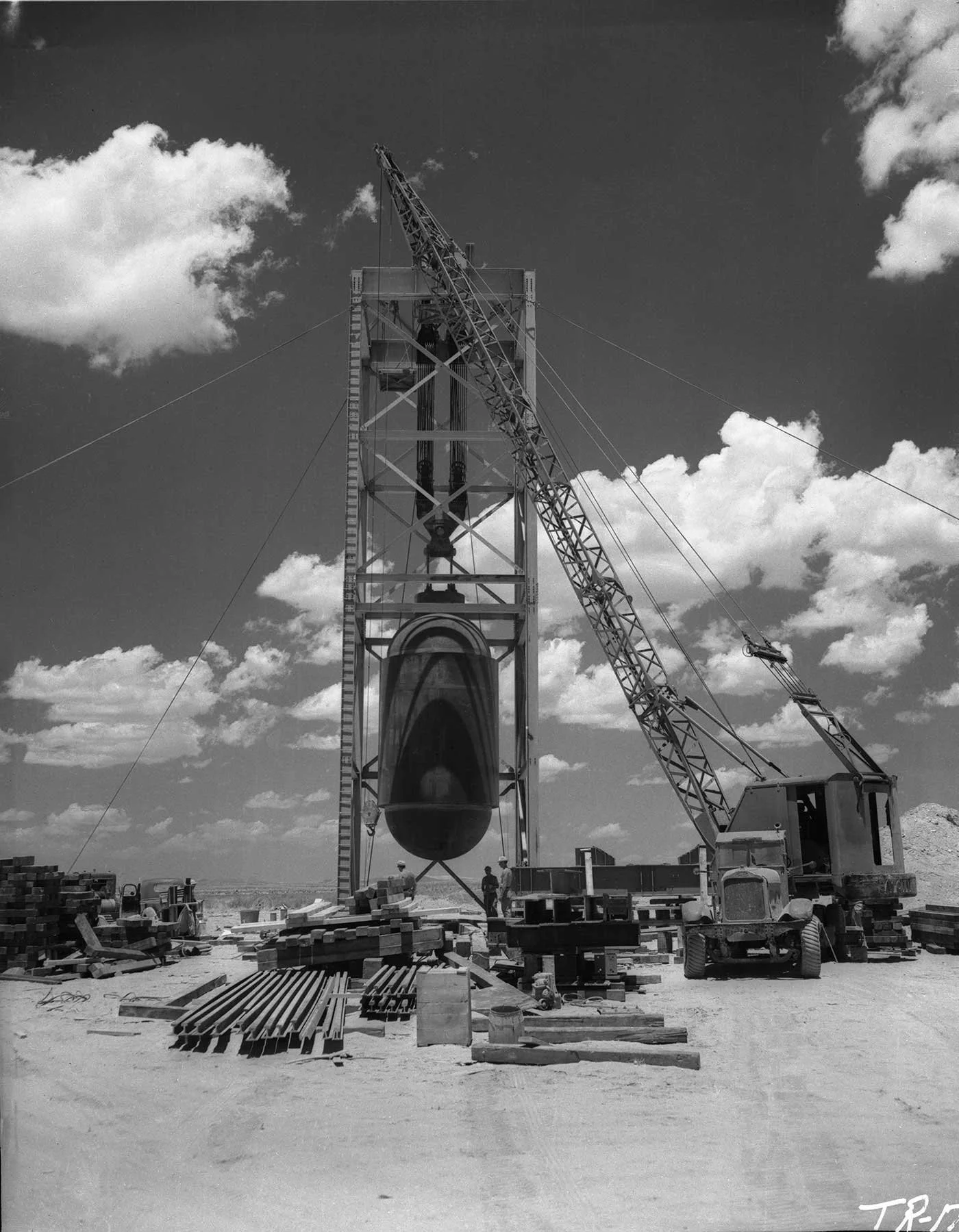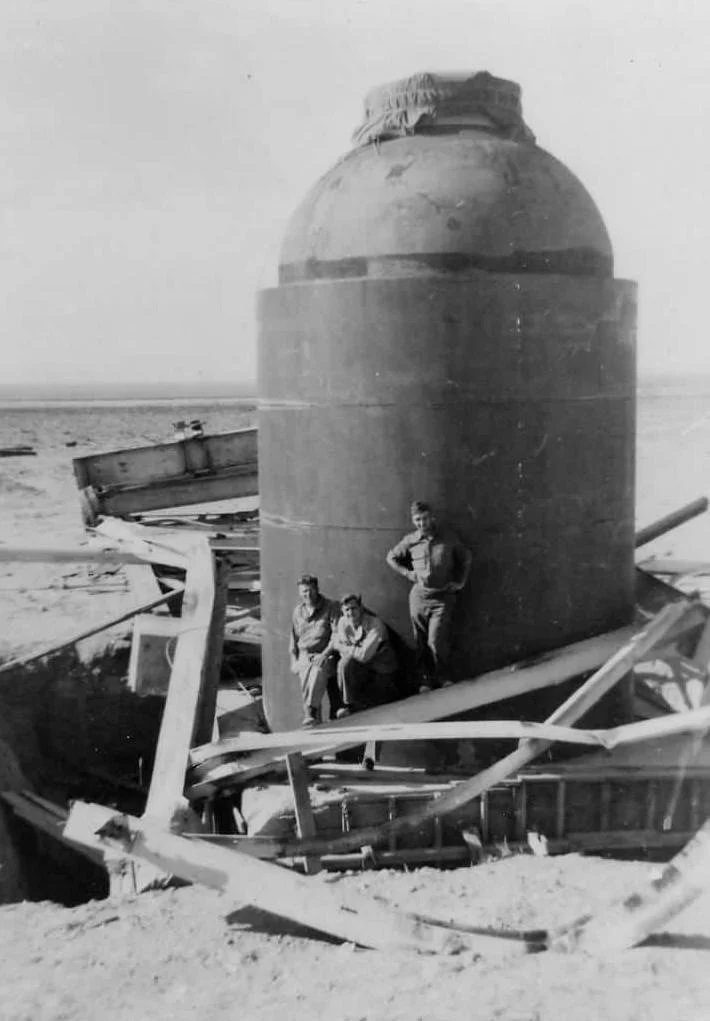
Trinity Site - WSMR, NM
No site is more emblematic of the Cold War than Trinity Site. It was here that a handful of scientists and observers witnessed the world’s first atomic explosion in 1945. This event led to the nuclear attacks that defeated Imperial Japan and effectively concluded World War II. What followed was a decisive shift of the USA and USSR from strategic competitors to nuclear rivals.
Trinity Site is a two hour drive “up-range” from the main post of White Sands Missile Range via paved and unpaved roads located within the base perimeter. It is situated in a broad and barren desert just west of the Oscura Mountains. The naming of Trinity Site was allegedly inspired by John Donne’s Holy Sonnet 14 which begins with the line “Batter my heart, three-person’d God,”. The site is open to the public on a limited basis, typically once or twice a year.
The only visible remnant of the explosion is a tower footing, now cordoned off by rebar. A more careful examination of the ground, however, reveals green, glass-like beads formed during the explosion from melting desert sand. The so-called Trinitite is protected by federal law and its removal is not allowed.
Out of curiosity, I brought along a radiation detector, often known as a Geiger Counter. The device measures Counts Per Minute or CPM. The readings generated at Trinity Site were reasonably low and seemed in line with normal background radiation levels (which are typically between 10-60 CPM). Some higher levels were generated by moving the detector to different spots along or above the ground.
All nuclear weapons use conventional explosives to compress the nuclear material and trigger the resulting nuclear explosion. Scientists at Trinity Site were concerned that, if the bomb’s initial TNT explosion did not trigger the desired nuclear explosion, radioactive plutonium would be blown across the backcountry. To deal with this possibility, the bomb was to be placed inside a large, steel vessel nicknamed Jumbo. Jumbo was meant to contain the plutonium if the nuclear explosion did not occur. (If the nuclear explosion did occur, Jumbo would be vaporized.) Ultimately, Jumbo was not used as the scientists were confident that their bomb design would work. Instead, Jumbo was hung from a steel tower approximately 800 yards west of Ground Zero.
Jumbo survived the test although the steel tower did not. The US Army later decided to destroy Jumbo, and in 1946 detonated eight 500-pound bombs inside of the vessel. Those bombs blew off both ends, but Jumbo’s body remained relatively intact, due to its 14-inch-thick steel walls. Today, Jumbo is on display at the edge of the Trinity Site parking lot.
A modest adobe ranch house sits two miles southeast of Ground Zero. It was here, at the Schmidt/McDonald house, that the plutonium core of the bomb was assembled in a “clean room” before insertion into the bomb apparatus. The house was built in 1913 by a German immigrant, Franz Schmidt, and later acquired by another rancher, George McDonald. After World War II began, the government took control of the property as it established the surrounding area as a training range. After the Trinity test, the house was abandoned and remained abandoned until the 1980s when the National Park Service restored it to its 1945 appearance.

Special thanks to Jenn Jett of the White Sands Missile Range Museum for her time and for making this visit possible.
Radiation detector courtesy of Keith Weinhold.
Missile Park photo credit: White Sands Missile Range Museum





